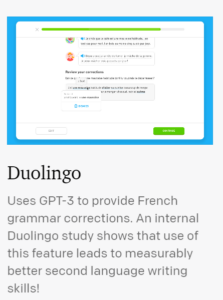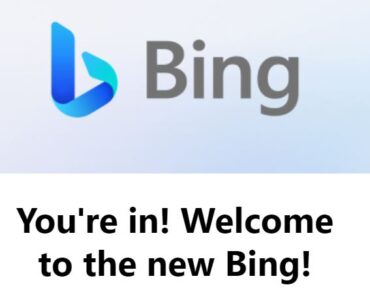by David Grunwald
What is ChatGPT?
ChatGPT is an AI language model developed by OpenAI. It is a conversational AI model trained on a large corpus of text data to generate human-like responses to text inputs. ChatGPT is capable of answering questions, generating text, translating languages, and performing a wide range of language-related tasks. It can be used for various applications, including chatbots, customer service, and information retrieval
(generated automatically by ChatGPT).
Since its launch in late November 2022, it seems impossible to escape ChatGPT. The OpenAI chatbot quickly became the nemesis of professional writers, managed to shake up the education system and was even labelled a Google-killer. ChatGPT is based on OpenAI’s GPT-3.5 language model.
How exactly does ChatGPT work? Who is behind it? And what is important to know before starting to use it? This post will provide answers to these questions.
Background
GPT-3.5 was trained using a huge database (data set) that includes a huge amount of web pages, articles and books, using a technique called Unsupervised Learning. In this method, an artificial intelligence model is fed unlabeled information, and it derives insights from it on its own.
ChatGPT was developed based on GPT-3.5 using two main techniques: Supervised Learning, in which the model was entered in conversations written by human trainers; and reinforcement learning through human feedback (Reinforcement Learning from Human Feedback), in which human coaches rated different answers given by the model to the same questions.
ChatGPT is a model belonging to the generative artificial intelligence category. These are machine learning-based algorithms that know how to create new content – texts, images, music, etc. – based on the information we trained them on.
What is a language model?
A language model is a machine learning model that is trained to generate text that is similar to text in a given training dataset. The goal of a language model is to predict the next word, given the previous words in a sentence. The prediction is based on the patterns and relationships learned from the training data.
Language models can be used for a variety of tasks such as text classification, machine translation, question answering, and more. They can be unsupervised, meaning they are trained only on the text in the training dataset, or supervised, meaning they are trained on text with labels for specific tasks such as sentiment analysis.
Large language models such as OpenAI’s GPT-3 (Generative Pretrained Transformer 3) have been trained on massive amounts of text data, making them capable of generating human-like text and performing various language-related tasks with high accuracy.
(generated automatically by ChatGPT).
OpenAI was founded in 2015 as a non-profit organization with the purpose of developing artificial general intelligence (AGI) – artificial intelligence with human-level capabilities – in a way that will benefit humans. Among the company’s founders: CEO Sam Altman (former president of startup accelerator Y Combinator), president and chairman Greg Brockman (former CTO of digital payments company Stripe), chief scientist Ilya Sutzkever and Elon Musk. Musk left the company in 2018 and he is no longer involved in its operations.
OpenAI is considered one of the most advanced companies in the field of artificial intelligence. In addition to ChatGPT, OpenAI is also behind the DALL-E2 image generator, the auto-completion tool for GitHub CoPilot lines of code, the Whisper audio transcriber and other developments. The company’s tools have been embedded in various Microsoft products, which, according to reports, has so far invested more than $11 billion in the company and its technology.
As part of their collaboration, Microsoft provides OpenAI with the computing infrastructure needed to train and run its models. In return, it receives a license to integrate OpenAI’s developments into its various products, including the Azure cloud service.
The cooperation between the two companies is expected to advance further: Microsoft is planning to integrate ChatGPT in Microsoft Office applications like Word, PowerPoint and Outlook.
Is ChatGPT free?
At this time, ChatGPT is free. Click here to start playing with ChapGPT. You can register with your email address or connect to it with a Google or Microsoft account.
It is highly conceivable that ChatGPT will not be free for much longer. OpenAI bears huge expenses for running the service and the company currently has little to no income.
In January, it was reported that OpenAI started operating a service called ChatGPT Professional that gives professional users access to a chatbot for $42 a month. Subscribers to the service enjoy a faster response time, continuous access to the service (free users are sometimes notified that the servers are too busy) and early access to new features. OpenAI has yet to officially announce the service.
What can be done with ChatGPT?
At this point, the most exciting thing you can do with the free version of ChatGPT is to have it write content. By guiding the chatbot through simple questions or instructions, it can write content at human level. Here is an example. I asked ChatGPT to tell me about GTS Translation and this is what it wrote:
GTS (Global Translation Services) is a professional translation company that provides language translation services to businesses and organizations. They offer a range of services, including document translation, website localization, interpretation, and localization engineering. They work with a network of certified linguists, ensuring high-quality translations for a wide range of industries and languages.
GTS Translation Services is known for its fast turnaround times, competitive pricing, and use of cutting-edge technology to streamline the translation process. They also have a strong emphasis on customer service and client satisfaction, with a team of dedicated project managers available to assist with any questions or concerns.
In summary, GTS Translation Services is a reputable language translation company that offers a range of services, uses certified linguists, and has a strong focus on customer service.
I could have not have written it better myself.
This feature is huge for people that are engaged in digital marketing, content writing, keyword research, copywriting, research and more.
Unfortunately, some students were caught abusing the chatbot to write their term papers and such. This caused some head-scratching in academic circles.
Sounds good, but can you trust everything ChatGPT writes?
Well, the answer is probably not and you should fact check everything that ChapGPT writes for you. OpenAI itself emphasizes that ChatGPT may present inaccurate, incorrect and misleading information.
OpenAI explains that this is a problem that is difficult to fix for various reasons: in reinforcement learning training there is no source that can be relied on as “correct”; If the model is trained to be more cautious, it may refuse to answer questions that it can answer correctly; Using a supervised training technique to solve the problem will mislead the model, because the ideal answer depends on what the model knows and not what the human trainer knows.
Furthermore, ChatGPT is not connected to the Internet and is therefore unable to display current information. Since OpenAI completed training ChatGPT in early 2022, it won’t know news stories and facts that occurred after that point in time.
Are my conversations with ChatGPT private?
No. OpenAI clarifies that as part of the company’s commitment to safe and responsible artificial intelligence, it examines the conversations in order to improve its systems and make sure that the content complies with its safety policy and requirements. It is not recommended to disclose any personal and private information while using ChatGPT.
Does ChatGPT support other languages?
Since the GPT-3.5 language model was trained on a huge data set that includes web pages in different languages, you can chat with ChatGPT in other languages as well. This includes machine translation and generation of content in other languages. However, ChatGPT will yield the best results in English.
Building next-gen apps with OpenAI’s API

OpenAI provides an API which can be used to develop apps based around the chatbox. This has already been put to use by language technology company Duolingo, that rolled out a French grammar checker based on OpenAI technology.
Can ChatGPT replace the Google search engine?
This question has recently caused a stir in Silicon Valley, especially following reports that Microsoft intends to integrate ChatGPT into its search engine, Bing.
It is unlikely that ChatGPT can replace the Google search engine in its current form. While ChatGPT offers the advantage of providing short, clear answers to user queries, it is not connected to the internet and may provide inaccurate answers. Furthermore, the revenue model for traditional search engines, which relies on ads appearing next to search results, has been successful, and it is unclear what the economic model for chatbot-based search engines would be. Google is reportedly preparing for this scenario with a new version of its search engine featuring chatbots.
Will ChatGPT upend the translation industry? How will it affect LSPs?
At this point in time, ChatGPT does not pose a threat to machine translation tools or to LSP companies. This was stated by no less an authority than the creator of Trados, Jochen Hummel. However, Mr. Hummel does point to a future in which chatbots will revolutionize translation workflows. In fact, if ChatGPT can generate and rewrite content, why not use it for PEMT? It would probably work well with it.






